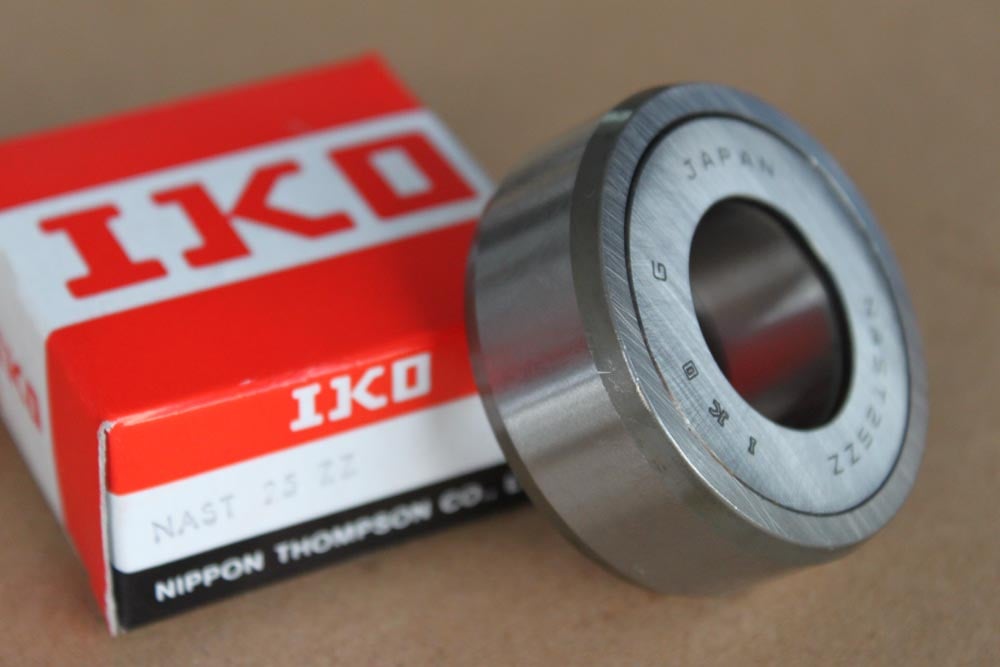
 News
NewsAs the world's top IKO imported bearings, they are widely used. Each industry has different characteristics of damage. Today we will look at the damage characteristics of engine sliding bearings.
(1) Mechanical damage
Sliding bearing mechanical damage refers to the presence of groove marks on the alloy surface of the bearing bush to varying degrees. In severe cases, metal peeling occurs on the contact surface and a large area of messy scratches occur; under normal circumstances, contact surface damage and ablation simultaneously exist. The main reason for the mechanical damage of IKO imported bearings is that it is difficult to form an oil film on the bearing surface or the oil film is severely damaged.
(2) Bearing cavitation
Under the repeated action of the cylinder pressure impact load), the surface layer of the sliding bearing undergoes plastic deformation and cold work hardening, and locally loses its deformability, gradually forming lines and expanding, and then as the wear debris falls off, cavities are formed in the loaded surface layer. . Generally, when cavitation occurs in the bearing bush, pits appear first, and then the pits gradually expand and cause cracks at the interface of the alloy layer. The cracks expand in the parallel direction of the interface until they peel off. The main reason for the cavitation of sliding bearings is that the sudden change of the cross-section of the structural elements such as the oil groove and the oil hole causes the oil flow to be strongly turbulent, and bubbles are formed in the turbulent vacuum zone of the oil flow, and then the pressure rises and the bubbles collapse to produce cavities eclipse. Cavitation generally occurs in the high-load area of IKO imported bearings, such as the lower bush of the crankshaft main bearing.
Welcome to visit our our website for IKO Bearing NAST 25 ZZ.

(3) Fatigue pitting
IKO imported bearing fatigue pitting refers to the overheating of the bearing and excessive bearing clearance due to the overload of the engine, causing fatigue damage, fatigue pitting or fatigue shedding in the middle of the bearing. This kind of damage is mostly caused by overloading, excessive bearing clearance, or dirty lubricating oil and foreign matter mixed in it. Therefore, when using, you should pay attention to avoid bearing overload work and do not run at too low or too high speed; adjust the engine to a stable state when idling; ensure normal bearing clearance to prevent the engine speed from being too high or too low; check and adjust the cooling The working condition of the system ensures that the working temperature of the engine is appropriate.
(4) Bearing alloy corrosion
IKO imported bearing alloy corrosion is generally caused by impure lubricating oil. The chemical impurities (acid oxides, etc.) in the lubricating oil oxidize the bearing alloy to generate acidic substances, causing part of the bearing alloy to fall off, forming irregular micro-cracks or Small pits. The main reasons for corrosion of bearing alloys are improper selection of lubricating oil, poor corrosion resistance of bearing materials, or rough engine operation and excessive temperature.
(5) Bearing melting
There is a small raised metal surface in direct contact between the journal and the bearing friction pair, resulting in local high temperature, and in the case of insufficient lubrication and poor cooling, the bearing alloy will be blackened or partially melted. This failure is often caused by the tight fit between the journal and IKO imported bearings; insufficient lubricating oil pressure can easily cause the bearing to burn.
(6) The bearing goes outside the circle
IKO imported bearings go outer circle means that the bearing rotates relatively in the seat hole. After the outer circle of the bearing, not only affects the heat dissipation of the bearing, it is easy to ablate the alloy on the inner surface of the bearing, but also damage the back of the bearing, and burn the bearing in severe cases. The main reason is that the bearing is too short, the tenon is damaged, and the processing or installation does not meet the specifications.